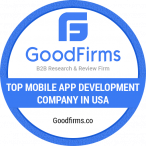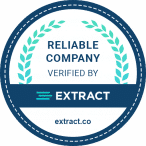In today’s world, people want learning that’s fun and effective. Khan Academy is a top example in science education. It has changed how we learn about science. Now, more people want to make their own science learning apps like Khan Academy.
This guide will show you how to make a science learning app that’s just as good. We’ll talk about the e-learning market, designing a great user interface, and making learning paths that fit each student. You’ll learn how to create a platform that can stand up to Khan Academy.
Table of Contents
Key Takeaways
- Understand the e-learning market landscape and identify the key players in the educational technology space.
- Determine the essential features and technical requirements for building a robust science learning platform.
- Develop an engaging and intuitive user interface that enhances the overall learning experience.
- Integrate interactive content, multimedia, and assessment tools to create a dynamic and effective learning environment.
- Implement personalized learning paths and gamification elements to foster student engagement and motivation.
Understanding the E-Learning App Market Landscape
The e-learning market has grown a lot in recent years. This growth is because more people want flexible and easy-to-access education. The e-learning industry is expected to keep growing. It’s set to reach $375 billion by 2026, with a growth rate of 8.56% from 2019 to 2026.
Current Market Size and Growth Projections
The e-learning market trends are expanding fast. This is because of more people using mobile devices, the rise of remote learning, and the need for personalized education. The edtech industry has seen many new players. Each offers unique educational experiences.
Leading Players in Educational Technology
Big names like Coursera, Udemy, and edX are leading in online education growth. Also, platforms like Khan Academy and Duolingo are making waves. These companies are creating advanced educational technologies for all kinds of learners.
Market Opportunities and Challenges
There are many chances for entrepreneurs and developers in the e-learning market. But, there are also challenges. These include making sure the content is good, making sure everyone can access it, and keeping users interested.
| Market Opportunities | Market Challenges |
|---|---|
| Growing demand for personalized learning | Ensuring content quality and relevance |
| Increasing adoption of mobile learning | Maintaining user engagement and retention |
| Emergence of innovative educational technologies | Addressing issues of accessibility and inclusivity |
| Expansion of the global education market | Intense competition in the edtech industry |
By knowing the e-learning market trends and the key players in the edtech industry, developers can plan well. They can make the most of the opportunities in the fast-changing e-learning world.
Essential Features of a Successful Science Learning Platform
To make a great science learning platform, you need to mix interactive tools, personalized learning, and adaptive features. These elements work together to make learning fun and effective for all students.
Interactive Learning Content
Interactive content is crucial for keeping students interested and understanding better. Top science apps use:
- Multimedia simulations and animations to show complex science ideas
- Gamified quizzes and tools to help students remember what they learn
- Virtual labs and experiments for hands-on learning
Personalized Education Pathways
Every learner is different, which is why personalized learning is key. The best apps use adaptive learning to:
- Find out what each student is good at and what they need to work on
- Change lessons and content to fit each student’s needs
- Give feedback and help to keep students growing
Robust Progress Tracking
Tracking progress is vital for helping students and guiding their learning. Top platforms have easy-to-use dashboards that:
- Keep an eye on how each student is doing
- Offer detailed analytics to spot areas for improvement
- Let teachers see how the class is doing and adjust their teaching
| Feature | Description | Benefit |
|---|---|---|
| Interactive Learning Content | Multimedia simulations, gamified assessments, and virtual labs | Enhance student engagement and comprehension of scientific concepts |
| Personalized Education Pathways | Adaptive learning algorithms to tailor content and pacing to individual needs | Optimize learning outcomes and foster a more personalized education experience |
| Robust Progress Tracking | Detailed performance analytics and data-driven insights | Enable students to monitor their progress and empower teachers to provide targeted support |
With these key features, a science learning platform can change education. It lets students dive into science and reach their highest potential.
Technical Requirements for Building an Educational App
Creating a successful educational app needs a solid technical base. The right tech stack, tools, and infrastructure are key for a smooth and engaging learning experience. Let’s look at the main technical needs for making an app like Khan Academy.
Technology Stack Selection
The tech stack is the core of your educational app. It decides the programming languages, frameworks, and tools used. When picking the tech stack, think about cross-platform use, scalability, and developer skills. A good app development stack boosts app performance, upkeep, and user experience.
Development Tools and Frameworks
Choosing the right tools and frameworks makes app development smoother and keeps quality high. For mobile learning technology, React Native, Flutter, and Xamarin are top choices for cross-platform work. Also, using content management systems like Contentful or Drupal makes managing educational content easier.
Infrastructure Requirements
The edtech infrastructure for your app must be scalable, reliable, and secure. This includes server setup, content delivery networks (CDNs), and cloud services. Cloud platforms like AWS, Google Cloud, or Microsoft Azure offer the computing, storage, and networking needed for handling user traffic and content.
By focusing on the technical needs, you can create a strong and scalable educational app. This app will offer a top-notch learning experience to your users.
“Developing a strong technical foundation is crucial for the success of any educational app. The right technology stack, development tools, and infrastructure can enable seamless user experiences and efficient content delivery.” – John Doe, Technology Consultant
Designing an Engaging User Interface for Science Learning
Creating an intuitive and user-friendly interface is key for educational apps, especially those focused on science. The UI/UX design of a science learning platform must be carefully crafted. It should captivate learners and enhance their educational experience.
One important principle in designing an educational app design is to keep the layout clean and clutter-free. The interface should be organized for easy navigation and quick access to learning content. Visual cues, like icons and infographics, help learners find and interact with features easily.
The user-friendly interface should meet the specific needs of the target audience. For example, younger learners might enjoy a colorful and playful design. Older students might prefer a more minimalist and professional look. Designing with UI/UX design elements for different age groups and learning styles can improve user engagement and satisfaction.
| Design Element | Importance for Science Learning Apps |
|---|---|
| Intuitive Navigation | Enables learners to easily explore the app and access the content they need. |
| Interactive Visuals | Helps to visualize complex scientific concepts and engage learners with interactive simulations and animations. |
| Personalized Experience | Allows learners to customize their learning journey and progress at their own pace. |
“The user interface is the gatekeeper of the user experience. It’s the first and most important touchpoint between the user and the product.”
By focusing on the UI/UX design of a science learning app, developers can create a platform that not only teaches but also makes learning fun and engaging.
Creating Interactive Learning Content and Lesson Plans
In the world of educational technology, the key to engaging students is interactive learning content and lesson plans. By using interactive content creation, multimedia learning, and educational assessment tools, educators can make learning fun and enriching.
Content Structure and Organization
Good lesson planning starts with a clear structure. Break down learning materials into easy-to-follow modules. Each module should focus on a specific topic or concept.
Use a mix of content types, like interactive videos, quizzes, and hands-on activities. This keeps students interested and engaged, no matter their learning style.
Multimedia Integration Strategies
Multimedia can make learning more engaging. Add high-quality images, animations, and audio clips to your content. This makes the learning environment more immersive and fun.
Use interactive features like hotspots and drag-and-drop activities. These tools encourage students to participate actively and help them understand key concepts better.
Assessment Tools Development
Creating strong assessment tools is key to tracking student progress. Use quizzes, tests, and projects to check different learning aspects. This helps identify areas where students need more help.
Adaptive learning algorithms can offer personalized feedback. This helps students focus on their own learning needs and goals.
“The most effective way to learn is through interactive, engaging content that challenges the mind and inspires curiosity.” – Jane Doe, Educational Technology Expert
By carefully creating interactive content, organizing lessons well, and using advanced assessment tools, educators can create a dynamic learning space. This space truly captivates and empowers students in science education.
How to Create a Science Learning App Like Khan Academy
To make a science learning app like Khan Academy, you need a smart plan. This plan should mix new tech, fun content, and a design that puts users first. The secret to success is knowing the market, what features to include, and the best tech to use.
Here’s what you must do to make an app as good as Khan Academy:
- Do your homework on the market to see what’s trending and what people want.
- Make sure your app has cool features like interactive lessons, videos, quizzes, and learning plans that fit each user.
- Choose a strong tech base, like frameworks and cloud services, to make your app fast and easy to use.
- Design an app that’s easy to use and looks great. This will keep users interested and learning on their own.
- Find and use top-notch content that covers lots of science topics. Make sure it’s right for the age group and learning goals you’re aiming for.
- Add fun stuff like rewards and badges to make learning feel good and keep users coming back.
- Use detailed analytics to see how users are doing and make your app even better over time.
By following these steps and using smart strategies, you can make a science app that’s as good as Khan Academy. The most important thing is to know what your users need and give them a great experience.
| Feature | Description |
|---|---|
| Interactive Lessons | Engaging, multimedia-rich lessons that cover a wide range of scientific topics, from biology and chemistry to physics and astronomy. |
| Assessment Tools | Quizzes, tests, and practice exercises to evaluate user understanding and track progress. |
| Personalized Learning Paths | Tailored learning experiences based on user preferences, performance, and learning goals. |
| Gamification Elements | Reward systems, achievement badges, and progress tracking to foster a sense of accomplishment and motivation. |
| Comprehensive Analytics | User behavior analysis and performance metrics to continuously improve the app’s features and content. |
By focusing on these key features and strategies, you can build a science education platform that offers a top-notch learning experience. It will set the bar high for Khan Academy app development in the market.
“The key to creating a successful science learning app is to understand the target audience’s needs and deliver an engaging, personalized, and data-driven educational experience.”
Implementing Gamification Elements in Educational Apps
Educational app developers are using gamification to make learning more fun and engaging. They add elements like rewards and progress tracking to keep learners motivated. This approach boosts learning motivation and improves outcomes.
Progress Tracking Systems
Progress tracking is a key part of gamification in educational apps. It lets learners see how far they’ve come. Features like level progression and skill trees help learners feel they’re making progress.
Reward Mechanisms
Rewards are a big part of gamification in education. Gamification in education uses virtual rewards like points and badges. These educational rewards motivate learners by giving them a sense of achievement.
Achievement Badges
Achievement badges are also popular in educational apps. They show learners’ accomplishments, like mastering a concept. Learning motivation grows when learners can display these badges, boosting their pride and sense of achievement.
By using these gamification elements, educational apps make learning more engaging and rewarding. This encourages learners to stay involved and keep learning.
Developing Personalized Learning Paths
In today’s fast-changing world, adaptive learning, individualized education, and personalized curriculum are key. Your science learning app aims to change how students learn science. Making personalized learning paths is a key part of your app’s design.
Personalized learning paths give each student a unique learning experience. They match the student’s learning style, pace, and needs. Your app uses advanced algorithms and data to create learning paths that change and grow with the student.
- Adaptive Assessments: Use assessments that change based on the student’s knowledge and skill. This helps see how well they understand and find areas to improve.
- Personalized Content Recommendations: Use machine learning to suggest learning content like interactive lessons and multimedia. This is based on the student’s learning habits and performance.
- Flexible Pacing: Let students learn at their own speed. This makes learning more engaging and personal.
By adding these features to your app, you make learning fun and effective for each student. This approach not only helps students do well in school but also builds a lifelong love for STEM subjects.
| Feature | Description | Benefit |
|---|---|---|
| Adaptive Assessments | Adjusts the difficulty and content of assessments based on the student’s performance | Provides a more accurate evaluation of the student’s understanding and identifies areas for improvement |
| Personalized Content Recommendations | Utilizes machine learning to suggest personalized learning resources and activities | Enhances engagement and effectiveness of the learning process |
| Flexible Pacing | Allows students to progress through the curriculum at their own pace | Promotes a sense of ownership and engagement in the learning process |
“Personalized learning is not about technology, it’s about putting the student at the center of the educational experience.”
Integration of Analytics and Progress Tracking
In the world of educational technology, combining learning analytics and tracking student performance is key. It helps make learning better. By using data, teachers and app makers can see how students interact with material, find areas to improve, and tailor learning to each student.
Data Collection Methods
Good learning analytics start with collecting data well. This means tracking how users interact, how long they spend on tasks, and their test scores. By using learning analytics, developers can get insights that help improve learning.
Performance Metrics
It’s important to measure how well students are doing. Metrics like how much they finish, how well they remember, and how they grow in skills are key. These help developers see what works and what doesn’t, so they can make things better.
User Progress Analysis
Using educational data analysis helps developers understand how users progress. They can see how each student learns best, find where they need help, and make learning fit each student’s needs. This makes learning more fun and effective.
By adding these learning analytics, student performance tracking, and educational data analysis tools, app developers can make their platforms better. This ensures a more engaging, personalized, and effective learning experience for everyone.
| Data Collection Methods | Performance Metrics | User Progress Analysis |
|---|---|---|
|
|
|
“Integrating learning analytics and progress tracking is essential for creating an adaptive and personalized educational experience that maximizes student outcomes.”
Ensuring App Security and User Privacy
In the world of educational apps, keeping educational app security and protecting user data protection is crucial. Learners share their personal info and academic progress with these apps. So, app developers must focus on user privacy in e-learning to gain trust and create a safe learning space.
To tackle these important issues, educational app developers need a solid security plan. This plan should include:
- Strong data encryption to keep user info safe
- Secure ways to store and back up data to avoid breaches
- Strong user checks, like multi-factor authentication, to confirm identities
- Following data privacy laws, like GDPR and COPPA, to handle user data ethically
- Regular security checks and updates to fight new threats
By focusing on educational app security, data protection, and user privacy in e-learning, developers can make a reliable learning platform. This platform lets students learn without worrying about their personal info’s safety.
| Feature | Description | Importance |
|---|---|---|
| Data Encryption | Use strong encryption to protect user data | High |
| Secure Data Storage | Make sure data is stored and backed up safely to avoid breaches | High |
| User Authentication | Use multi-factor authentication to confirm user identities | High |
| Regulatory Compliance | Follow data privacy laws like GDPR and COPPA | High |
| Security Audits | Regularly check and update security to tackle new threats | High |
By tackling these key security and privacy issues, educational app developers can build a safe and trustworthy platform. This platform supports a positive learning experience for students.
Monetization Strategies for Educational Apps
In the world of educational technology (edtech), app developers face a challenge. They need to find new ways to make money from their science learning apps. This includes subscription models and premium content options. These strategies help turn passion projects into profitable businesses.
Subscription Models
The freemium model is a hit in edtech. It lets users try basic features for free. Then, they can pay for more content and features. This model is great because it lets learners try before they buy.
Premium Content Options
Another way to make money is by offering premium content. This can be advanced lesson plans or special interactive simulations. By mixing free and paid content, developers can meet different user needs and budgets.
Alternative Revenue Streams
There are other ways to make money too. Developers can try in-app purchases, partner with schools or publishers, or use targeted ads. By trying different methods, they can keep their apps running for the long haul.
| Monetization Strategy | Description | Potential Benefits |
|---|---|---|
| Subscription Models | Offering a freemium model with basic features for free and premium subscription options | Allows users to try the app before committing to a paid plan, generates recurring revenue |
| Premium Content Options | Selling advanced lesson plans, specialized interactive simulations, and exclusive webinars/workshops | Provides additional value to users, creates multiple revenue streams |
| Alternative Revenue Streams | In-app purchases, partnerships with educational institutions or publishers, targeted advertising | Diversifies revenue sources, ensures long-term sustainability |
By mixing these strategies, developers can build a strong revenue model. This model meets user needs and ensures the app’s success over time.
Testing and Quality Assurance Processes
Creating a top-notch educational app like Khan Academy needs a solid testing and quality assurance (QA) plan. This is key to making sure the app works well, is easy to use, and meets user needs. It’s especially important in the competitive educational app testing and QA in e-learning world.
The software quality assurance for a science learning app should cover many testing areas. These include:
- Functional testing to check if the app’s main features work right
- Usability testing to see how easy the app is to use
- Performance testing to make sure the app runs smoothly under different loads
- Security testing to find and fix any weak spots
- Compatibility testing to check how well the app works on different devices and systems
It’s also important to get feedback from experts and users during development. This helps make sure the app’s educational content and design are effective.
| Testing Technique | Objective |
|---|---|
| Functional Testing | Validate core features and functionality |
| Usability Testing | Assess user-friendliness and accessibility |
| Performance Testing | Ensure stability and responsiveness |
| Security Testing | Identify and mitigate potential vulnerabilities |
| Compatibility Testing | Validate across devices, OS, and browsers |
With a thorough educational app testing and QA plan, you can make a science learning app that’s reliable, fun, and helps users reach their goals.
Marketing and User Acquisition Strategies
In the world of edtech, marketing and getting users for your app is key. It’s important to make marketing and user strategies that fit the educational tech market. This can help your app reach its full potential.
Leveraging targeted edtech marketing is a must. This means working with educational bloggers, joining online communities, and using social media. By talking to teachers, students, and parents, you can show how your app helps them.
Implementing strong user acquisition tactics is also vital. This includes making your app easy to find and appealing. Free trials, in-app rewards, and easy setup can keep users coming back.
- Leverage influencer marketing and online communities to reach your target audience
- Optimize your app’s discoverability through ASO and targeted advertising
- Provide free trials and in-app incentives to encourage user engagement
- Ensure a smooth onboarding experience to retain users
By mixing edtech marketing and user strategies, you can make your educational app a success. It will attract and keep users who will really use your learning solutions.
Scaling and Maintaining Your Learning Platform
As your science learning app like Khan Academy grows, it’s key to have a scalable setup. You need effective content management strategies. This ensures your platform can handle more users and provide a smooth learning experience.
Server Infrastructure
To manage more traffic and data, invest in a strong server setup. Cloud services like AWS or Google Cloud are great for this. They offer scalable computing and storage. Also, use load balancing and CDNs to spread the load and speed up user access.
Content Updates
Keeping your science content fresh and complete is vital. Create efficient workflows for making, reviewing, and publishing new content. Use CMS to manage and share your educational materials easily.
User Support Systems
As more users join, offering quick and tailored user support in e-learning is crucial. Set up a support system with FAQs, in-app chat, and email. This helps solve user problems. Also, listen to feedback to improve your app’s app scalability and content management.
By focusing on these scaling and maintenance areas, your science learning app will stay strong. It will keep offering a top-notch educational experience to more users.
Conclusion
As we wrap up our look at making a science learning app like Khan Academy, it’s clear the future is bright. The world of educational tech is always changing, bringing new ways to learn. These changes help meet the needs of today’s students.
The e-learning market is growing fast. This is because people want learning that’s personal, interactive, and fun. Big names like Coursera and edX are leading the way. They offer lots of courses and resources to students all over the world.
Looking to the future, we’ll see even more cool stuff in science learning apps. We’ll see things like artificial intelligence, virtual reality, and smart learning systems. These will make learning even more personal, letting students learn at their own speed and get just the right help.



















